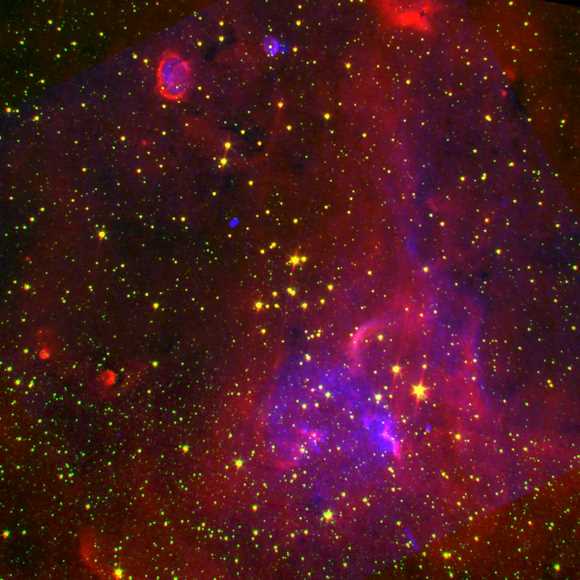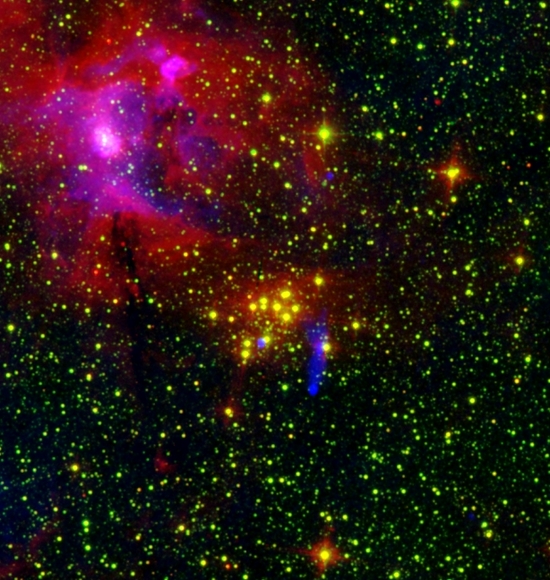Two “supernova factories,†rare clusters of Red Supergiant (RSG) stars, have recently been discovered. Together they contain 40 RSGs, which is nearly 20% of all the known RSGs in the Milky Way, and all 40 are on the brink of going supernova. “RSGs represent the final brief stage in a massive star’s lifecycle before it goes supernova,†said Dr. Ben Davies of the Rochester (New York) Institute of Technology. “They are very rare objects, so to find this many in the same place is remarkable.â€
The two clusters are located next to each other on the edge of the central galactic bar, a long bar of stars within the central bulge of our Milky Way Galaxy. This galactic bar is believed to be made up of about 30 million stars, most of them older, red stars, and stretches 27,000 light-years from end to end. The bar is plowing through the disc of the Milky Way, and astronomers believe the interaction between the bar and the disc triggered the star formation event, creating the uncommon clusters.
The clusters are about 20,000 light years from Earth and about 800 light years from each other. Cluster 1 contains 14 RSGs and is 12 million years old; Cluster 2 contains 26 RSGs and is 17 million years old. Massive stars are rarely observed because they burn their fuel up very quickly. RSGs are doubly rare because they are only a brief period of that short life cycle.
Dr. Davies said, “The next supernova could go off in one of these clusters at any time. We estimate that it’s about 5000 years between explosions for these clusters and we can see the remnants of a supernova that went off around 5000 years ago. That means that the next one could be any time between today and 7008 AD.â€

The team identified the clusters initially using the mid-infrared Galactic Plane survey (GLIMPSE), a huge database of images taken by the Spitzer Space Telescope. They found two distinct groupings of bright stars very close to one another in the constellation of Scutum. Using the Keck Telescope in Mauna Kea, Hawaii, they were then able to pin-point the exact distance from Earth of each star in each group. These observations showed that, in each group, large numbers of stars were at exactly the same distance from Earth, and therefore were members of the same cluster.
“The discovery of these clusters gives us a great opportunity to answer some long-standing questions in astrophysics,†said Davies, “such as exact mechanisms of how massive stars evolve toward supernovae, and how the Galactic Bar can trigger huge starburst events in the Milky Way.â€
Davies presented his findings at the Royal Astronomy Society’s National Astronomy Meeting in Belfast on April 1, 2008.
Original News Source: Royal Astronomy Society Press Release


The article does not give an estimate of the total number of member stars in these clusters. I wonder if there are enough members to make it worthwhile to construct HR diagrams: a relatively simple way to reveal much about the evolution of these massive stars.
I think it’s interesting to think that since these stars are about 20k light years away, there’s probably four or five supernovae that have already happened but we haven’t seen yet.